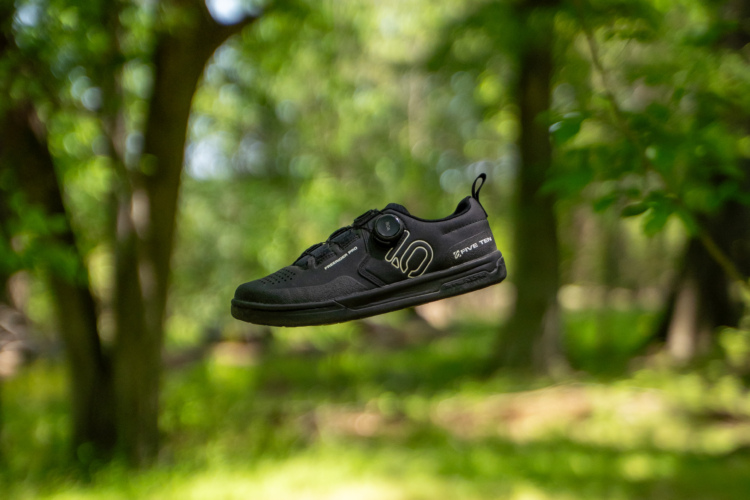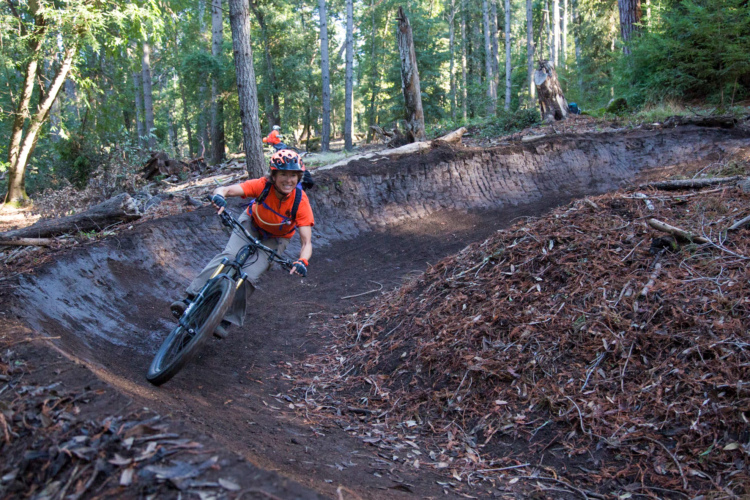
This little series titled ‘A Mountain Biker’s Guide to Nature’ is intended to spark interest and attention toward the natural landscapes we all enjoy riding through. The hope is that the more we learn about nature, the more we can appreciate and respect it, and possibly share that reverence with others.
While fresh spring leaves are a distant dream in the northern hemisphere, aspen stands out of the greater arboreal crowd year-round. The bright white barked trunks reach skyward from connected root systems to create a crackling song high in the forest canopy. The noisy North American species, commonly called Quaking Aspen (Populus tremuloides), spreads across a massive 47 degrees of latitude, often growing in cooler climates at altitudes between 5,000 and 12,00 feet.

As the heaviest and one of the oldest living organisms on earth, aspen largely grow in colonies by sending up clones of themselves from their massive and ever-expanding root systems. The massive colonies can reach across hundreds of acres. One specimen in south-central Utah, aptly named Pando, meaning “I spread out” in Latin, covers an estimated 106 acres, weighs roughly 6,600 tons, and is estimated to be at least 80,000 years old. The colony’s ability to resist forest fires is thought to be a major contributor to its longevity, as competing pine species are continually cleared out by wildfires. A study released in 2018 confirms that the Pando specimen is slowly dying, with human interventions listed as the most likely cause of its slow decay.
In addition to its natural cloning process that maintains a fresh set of stocks annually, energy resources for aspen are continuously replenished through its photosynthesizing bark. Unlike many deciduous trees that essentially hibernate once their green fades to brown, aspen is able to continue growth through the cold winter months. Across the six different species of aspen that hard-working bark often wraps trunks of 3-18″ in diameter that stand with symmetrically vertical posture at 20 to 90 feet.

Apart from their bright white bark and communal living preferences, aspen can be identified by their sturdy bark and cacophonically musical leaves. The petioles of aspen leaves are flat, reducing aerodynamic drag during the harsh mountain storms that are common in their native habitats. This reduced drag diminishes the wind’s effect on their branches and trunks and allows the leaves to whirl around singing their famously quaking tune.
From a few bike-lengths away, aspen can closely resemble their deciduous birch neighbors. Both have white bark and green leaves, but there are a few ways to tell the two trees apart. First off, the bark of birch flakes off easily and has a paperlike consistency, while aspen bark holds firmly to the tree and bears scars where branches have fallen off and animals have interacted with the trunk. Secondly, the leaves of the aspen are heart-shaped, with small round teeth or serrations, while “the white birch has an ovate or spear-shaped leaf with a double-serrated edge or leaf margin.”
Native people across Canada, Mexico, and the US have historically used various elements of aspen trees in their medicinal practices. The bark was boiled to create a cough syrup or to expel worms, buds were used to make a salve said to relieve a sore nose, and roots were boiled into a tea that was consumed to prevent premature childbirth and was also used as a contraceptive.
Check out this article on HerbaZest.com to learn how the medicinal properties of aspen can be used to relieve inflammatory pain, treat diarrhea and IBS symptoms, alleviate chronic skin conditions, and a host of other useful healing remedies.

For a deeper dive into the life of these ancient organisms, check out some of the resources below that were used to research this article.
- https://www.fs.fed.us/wildflowers/beauty/aspen/grow.shtml
- https://www.treehugger.com/slideshows/natural-sciences/nature-blows-my-mind-80000-year-old-aspen-grove-clones-itself/#slide-top
- https://web.archive.org/web/20120126102319/http://www.cpluhna.nau.edu/Biota/aspen_forest.htm
- https://www.herbazest.com/herbs/aspen
- https://en.wikipedia.org/wiki/Pando_(tree)
- http://www.thegoddesstree.com/trees/Aspen.htm
- http://ctl.w3.uvm.edu/omeka/exhibits/show/uvmtrees/quaking-aspen/quaking-aspen-native-american-
- http://www.nativetech.org/plantgath/aspen.htm
Your turn: Which tree or plant would you like us to profile next?





















3 Comments
Feb 17, 2020
Feb 14, 2020
Feb 16, 2020
For plants to cover, though, I'd love to see some of the more common ones that we overlook, but that surely still have really amazing things about them. For where I am in Utah, that might include Subalpine Fir, Juniper, Gambel Oak.